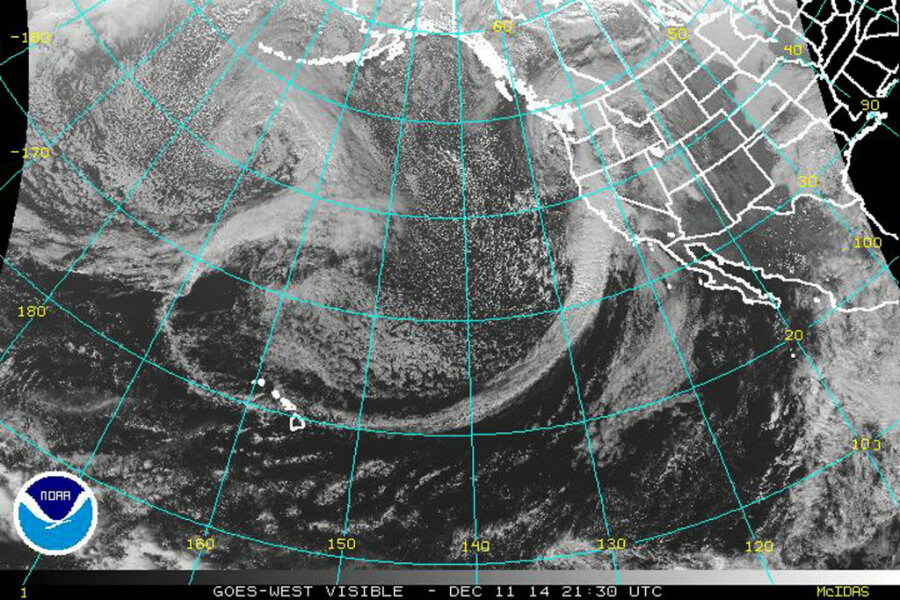Could a Pineapple Express save California from drought?
Loading...
It has been dubbed the "Pineapple Express" and it's taking the West Coast by storm.
Both literally and figuratively.
Social media is buzzing about the weather pattern because it shares the same name as the popular 2008 Seth Rogen and James Franco movie.
The Pacific Ocean-originating storm system is forecast to drop more than 10 inches of much-needed rain in Northern California and Washington State this weekend, according to the National Weather Service. The NWS has already released flash-flood warnings, heavy rain, and high wind gusts for the region.
NBC News reported the storm had initially left some 60,000 people without power in the San Francisco Bay Area, and by Friday night that number had been reduced to approximately 9,000. The high winds have knocked down multiple power lines and trees since the storm made landfall. Numerous communities were under flood-watch in Northern California, and minor mudslides have been reported in Washington, according to Reuters
However, this storm does not technically meet the criteria for a Pineapple Express. So what exactly is this weather pattern that brings winter rain from the mid-Pacific?
A true Pineapple Express is a continual build up of tropical moisture that extends from Hawaii all the way to the West Coast and produces major rain storms, according to AccuWeather. The moisture needs to be guided into the storm and it acts as the fuel for the weather pattern.
The storm system now hitting the West Coast is powered by tropical moisture but it is also fed by a strong east-west jet stream that usually runs through the north-central Pacific Ocean, according to AccuWeather.
"Pineapple expresses are not known for wind, they're known for rain," Accuweather meteorologist Bernie Rayno says. "If this was a true pineapple connection, rainfall amounts would be double what we're seeing now."
Though this storm will provide some relief to parts of California dealing with a severe drought, it will not be a panacea. The temperature of the tropical moisture will not allow for the accumulation of snowpack in the mountain areas, according to Reuters. The snowpack is more crucial to drought recovery because it stores a third of the water needed by residents and agriculture, according to NBC.
California’s drought has been one of the worst in history and it has affected more than 37 million people, according to the United States Drought Monitor, or USDM. The USDM reports that since the start of the water year, which began on Sept. 30, 2014, over 58 percent of Californians have been living in “exceptional drought” conditions.
After six weeks of dry conditions, the current storm system is providing some welcome rainfall. It just won't be nearly enough to reduce the drought conditions.






